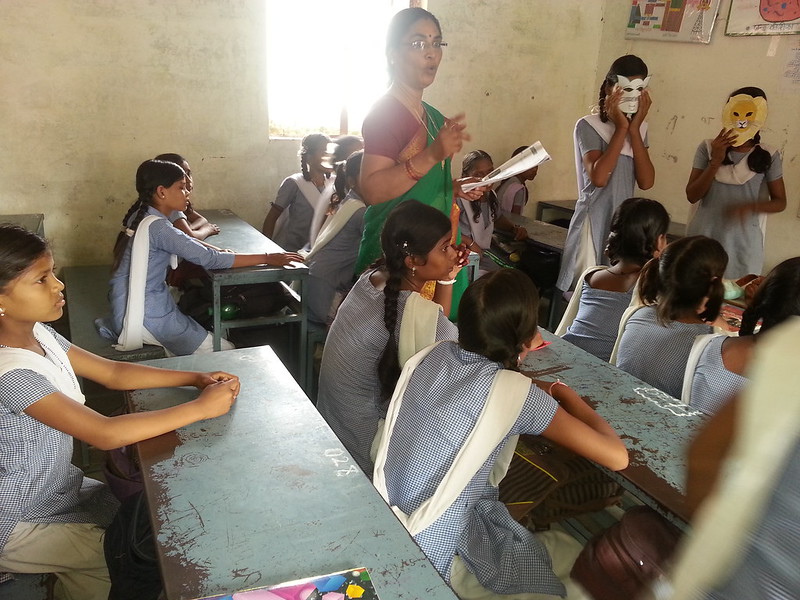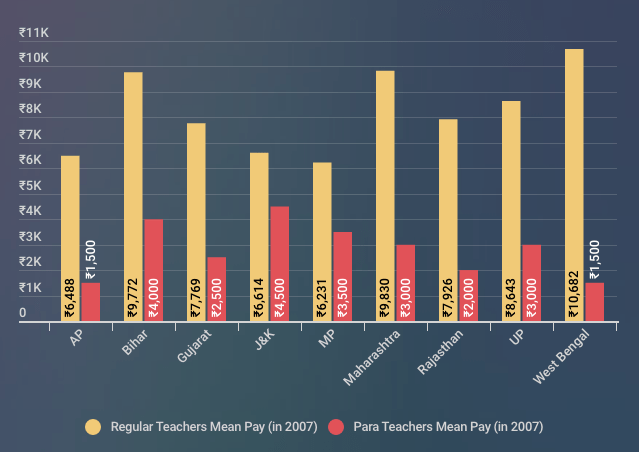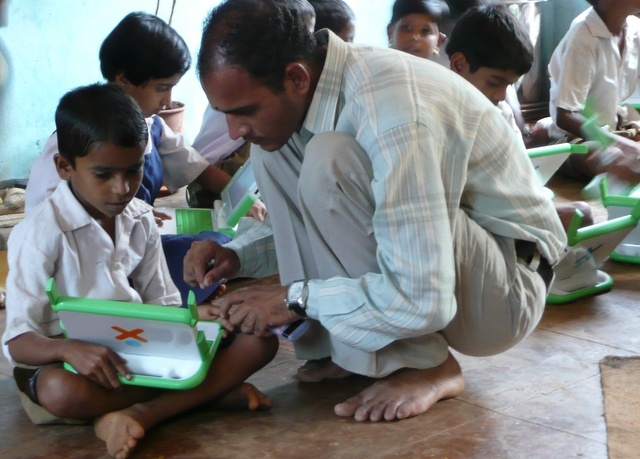Silences in policy are as important as what receives attention and is articulated. If it is the nature of policy to articulate principles and present the ‘bigger picture’ of a matter and not get into the details of execution—then, the ‘omissions’ of certain principles are not just ‘silences’.
Silences in policy arise for a range of reasons—matters on which consensus has not been arrived at, matters that seem to be so taken-for-granted that they don’t actually get noticed and written about, matters that are inconvenient (and therefore silence is more expedient than any policy formulation), and finally, matters which remain unnoticed. As ambitious as the new National Education Policy (NEP 2020) is, in terms of its scope of reform and conceptual frameworks, there are some noticeable ‘silences’ in it.
For example, the NEP 2020 recommends restructuring the school system from the familiar 10+2 bifurcation, into 5+3+3+4—ostensibly because such a system would be better aligned to the child’s developmental trajectory and related educational needs. How this will be achieved, and whether it will involve physical reorganisation and changing the ways teachers are appointed, is not discussed. That will be left to those who execute policy to interpret, and then devise an appropriate implementation plan for.

What we are calling a ‘silence’ though, is a core issue or aspect which has implications for the big picture that has not found mention in the NEP 2020. For example, while the policy draws attention to the need to address educational inequality for ‘socially and economically disadvantaged groups’, it does not refer to the idea of affirmative action or reservation to achieve this. Arguably reservations merit mention because, in a scenario of expanding private and self-financed educational institutes, the inclusion of students from groups who are constitutionally entitled to affirmative action is essential to examine from a policy perspective. The silence in this case could be an oversight, or deliberate, as the matter is contentious.
The NEP contains many such silences, both conspicuous and otherwise: this is especially the case when it comes to teaching. While the document acknowledges the need for better teachers to transform India’s education system, the issues on which it chooses not to speak still leave teachers—and the profession at large—extremely vulnerable in the future.
Teachers and the Teaching Profession in the NEP 2020
The NEP 2020 notes that the current working conditions of teachers are far from satisfactory, thus demanding urgent reforms. We couldn’t agree more.
A recent report by the Comptroller and Auditor General of India found that while over 1.4 lakh toilets had been constructed in government schools under the RTE, over 40% were unused, incomplete, or worse, non-existent. The report further records that 75% were not hygienically maintained, while 70% did not have access to running water. Kokila*, a friend and a government teacher working in one of Delhi’s Municipal Schools, once shared her daily anxieties with us. “I avoid drinking water in school. Often by lunchtime, I am distracted and can’t focus on teaching. All my attention is directed at controlling my bursting bladder and how to go about it!” Improving such basic service conditions are essential to restoring confidence in the public at large and in teachers themselves, that the profession is respected.
The CAG of India’s Performance Review on ‘Construction of Toilets in Schools by Central Public Sector Enterprises’ got tabled in parliament today.
Report Card on Swachchh Bharat Abhiyan?
Ask: when was this report shared with Govt?
Ans: 2nd Jan
PTI reportshttps://t.co/SAAS6A3rVR— Himanshu Upadhyaya (@HimUpadhyaya) September 23, 2020
In that vein, the NEP 2020 contains 222 references to the term ‘teacher’ [1]. Coming third after ‘school’ (404 references) and nation(al) (245 references), this draws attention to the fact that policy not only recognises the importance of teachers in any education system, but also places the responsibility of realising the policy’s goals on this group. Whether it is achieving ‘foundational learning’ for all, or ‘active learning in science’, ‘higher-order cognitive outcomes’, ‘quality’ or ‘equity’, it is teachers who will have to deliver.
So, the policy promises that there will be ‘better teachers’ in the future, prepared through its new tech-savvy teacher ‘training’ programmes, who will receive continuous professional development from technological interventions. It also flags the importance of getting the ‘best’ and ‘brightest’ to join the teaching profession to improve the state of education in India.
Yet, the ‘teaching profession’ is referenced only five times in the 2020 NEP, of which four references call for improving the status and prestige of the profession alone. This is certainly relevant: according to the Varkey Foundation’s Global Teacher Status Index 2018 (GTSI 2018), the profession’s status is middling and equated with another profession of low social prestige in India—a librarian. In comparison, countries such as Russia, China, and Malaysia equate teachers with much more prestigious and lucrative occupations, such as doctors. This is significant, as the report finds that the perceived status of teachers is linked to pupil performance—higher status perception leads to making teaching aspirational, which enhances professionalism and motivation, and ultimately, the quality of teaching and learning.

But, improving teaching status in India seems to be a Catch 22 proposition: better status is derived from having better teachers, yet better candidates will opt to be teachers if they largely perceive the profession as having a good status. So, what is the NEP offering to improve the status of teaching as a profession in India?
There is one issue central to the question of status, that can address this dilemma: the need to secure its professional terms of employment. On this matter, however, the NEP 2020 is mostly silent.
The State of Teachers in India
When it comes to work contracts and pay, Indian school teachers are currently a vulnerable professional group. The GTSI 2018, which includes perceptions regarding pay as an indicator of professional status, notes that in the case of India the estimated actual wage for teachers is less than the perceived fair wage in the education sector.
For example, as of 2016, about 30 % of teachers in the elementary and secondary stages are employed by private unaided schools; this number has been growing at a rate of about .8 % a year. The private sector’s interest in keeping teacher salaries low in order to keep fees low and schools profitable is well known. While there are variations, as of 2010, private budget schools catering to the lower middle classes and working classes, charging fees starting at about Rs 1,000 per month, are known to pay teachers one-fifth of the salary of regular government school teachers. In some cases, this is even lower than the minimum wage scale for already underpaid unskilled manual labour, currently set at Rs. 9,750.00 per month, plus allowances of Rs. 1,430 in Urban Areas. This may not be enough to cover their daily transport to school!

This situation is exacerbated in the case of contractual teachers—think para teachers, art teachers, computer teachers, or sports teachers—who are indispensable elements of India’s fragmented teaching system, especially in rural areas. Overall, about 13% of India’s teachers are contractual or casual workers, while the overall percentage of such teachers in secondary government schools is 30%. In nine states where the percentage is more than 30%—including Mizoram (62%), Arunachal Pradesh (51%), Jharkhand (52.44%), and Meghalaya (47%)—the full-time profession is as good as dead. In such areas, contract teachers fill in the gaps left behind by full-time teachers, yet are significantly underpaid in comparison, despite their qualifications.
Clearly, professionally qualified teachers need to have a secured livelihood and formal work contracts in order to perform to their best abilities. In their absence, teachers are rendered vulnerable to mistreatment as casual workers, and ‘replaceable’ resources.
Yet, the NEP 2020 recognises the need to ensure the ‘livelihood’ of teachers only once, in its introduction. The six times the NEP 2020 does have something to say about pay and salary is when it refers to ‘incentives/incentivisation’ (9 references) and linking pay to performance (13 references). Advocates and lobbyists who favour contractual, incentivised employment in order to make teachers more accountable and efficient, seem to have succeeded in finding expression in the NEP. Yet, globally there is currently diminishing support for linking pay to performance. Growing evidence suggests that teachers who have high self-efficacy and strong professional identities don’t buy into or respond well to performance-pay schemes.
Although the NEP has avoided discourses deriding the teacher, for a policy document otherwise committed to teacher-driven educational reform, it says little in terms of the imagination of the profession or its revival. Incentivising professional work around ‘performance’ and scientising professional work around ‘competencies’ offer a thin view of the profession and the issues it faces. India’s education system, which needs at least 89 lakh teachers to function optimally, may be better served in the short and long term if we look at the many attendant aspects required to enable good teaching.
The Road Ahead
The NEP’s conjures up the image of courageous, capable wonder women, who, because they are picked from ‘the best and brightest’, held accountable to standards, incentivised to perform, and committed to building the nation, deliver. We have the choice of being persuaded by the policy’s optimism about this panacea, but the silence on the matter of improving conditions of the profession leaves us wondering if we will actually be able to get good teachers to join the profession, or keep the ones already in it. Good teaching is an outcome of a sound education system, of which teachers are a huge part. More will need to happen at a systemic level—beyond individual-level incentives—to improve the prospects of teachers, and through them, those of their students.
Will conditions that demotivate teachers from doing their best—such as unequal pay, being perceived as ‘deficit’, or subjected to training that is substandard, ritualistic, and dehumanising—be replaced by those that enable teachers to receive professional recognition, and derive a sense of purpose and direction from the system’s commitment to deliver for all? Given the fall-out of COVID-19 for teachers employed in private schools, will all teachers be provided with some minimum job security and access to benefits such as health insurance and provident funds? Will the system recognise and provide teachers with official resources to plan and prepare for their teaching, to help them reflect on what works and what can be changed? Will they be supported and enabled to exercise their professional judgement and autonomy in professionally run schools? Will the system employ all the different kinds of teachers who are needed for a holistic education system?
“The solution for India’s masses is not to promote for-profit private #education that will continue to weaken a family’s finances; instead, we must push to strengthen the public alternative, which comes at no cost to them” — @SiddeshSarma https://t.co/VXKii5Tr2i
— The Bastion (@_thebastion_) September 17, 2020
The NEP 2020 does not fully answer these questions. The silences in the policy seem to suggest that adequate financing of the profession via the public exchequer is not on the cards. The emergence of for-profit players in Continuous Professional Development and teachers’ testing, and in ‘out-sourcing’ models being adopted in vocational education and ICT education, are indicative that the market rather than the State will grow in influence. Teachers will find themselves increasingly facing contractual and casualised employment, such that the profession’s status is likely to dip even further and become inadvertently feminized. It seems likely that in spite of the 222 references to teachers in the policy, it is the silences on matters central to and crucial to the profession’s turnaround that will truly define the future of the profession.
[1] This and other term counts from the NEP mentioned in this article have been made using the string search feature on MS Word.
*Name changed. | Featured image courtesy of Carla, (CC BY-SA 3.0). | Views expressed are personal.







[…] You May Also Like: Whither the Teaching Profession? Inspecting Some Silences in the NEP 2020 […]
[…] You May Also Like: Whither the Teaching Profession? Inspecting Some Silences in the NEP 2020 […]
all parts of it may not be actioned, but we can expect some recommendations at least to come into effect from 2021 onwards
Will NEP 2020 come in to effect by 2021?